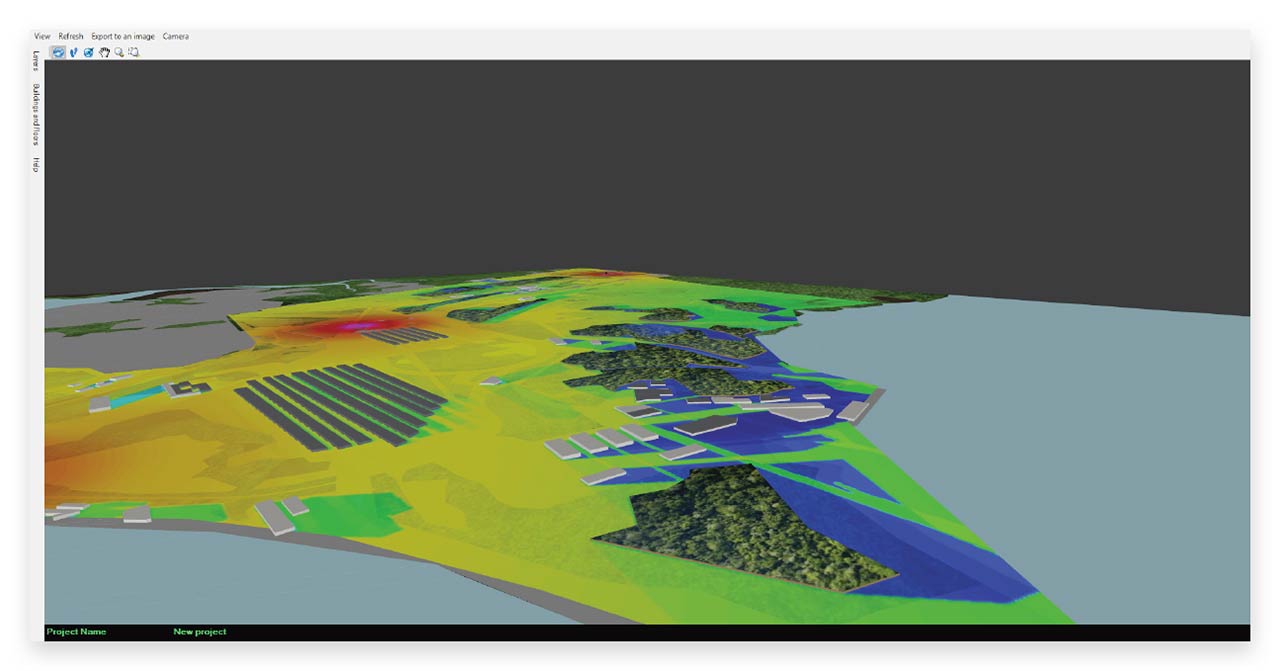Case Study: Deploying a LoRa Network in a Port using iBwave
Learn how one of the largest mining and logistics companies used iBwave to significantly improve the performance and coverage of their indoor/outdoor LoRa network.
OVERVIEW
One of the world’s largest mining and logistics companies was looking for a way to improve the RF coverage at one of their port locations utilizing LoRa technology.
This case study looks at a port area that was already equipped with an existing LoRa (Long Range) sensors network. The port was used to connect to their mines and provide cargo services for third parties. The goal of the project was to evaluate the LoRa network with the 3 existing towers, gateways (3) and antennas and then see how the network performance could be improved using iBwave to design and simulate network performance.

Why LoRa?
LoRa is a long-range technology with low power consumption and various sensor types such as temperature, vibration, pressure, and others, all important within a mine environment.
Why iBwave?
While the company was using a competitor software to design Wi‑Fi networks, they are starting to see more and more projects in other technologies and needed a software capable of more than Wi‑Fi. Since iBwave software provides design capabilities for Wi‑Fi + IoT bands, among others, it was an ideal choic
THE CHALLENGES
ACCURATELY MODEL RF ENVIRONMENT (PORT)
With a challenging RF environment that includes both indoor and outdoor, the company needed a way to accurately model the port and its landscape including the existing buildings, obstructions, and surrounding vegetation.
PREDICTIVE DESIGN FOR LORA NETWORK
Prior to iBwave and with no way to do a predictive design, the company had to install equipment and conduct time-consuming surveys. Sometimes, they did not have enough time in the project phase to do the surveys, so installations were based on previous analysis or experience. As a result, target coverage was difficult to achieve and led to inevitable time-consuming troubleshooting.
STANDARDIZE REPORTING & PROCESSES
As one of the largest mining companies in the world, there are many operations running simultaneously in different regions of the world. And while some standardization existed around project standards and KPIs, the company was looking for a way to introduce more standards by wireless technology (Wi‑Fi, IoT, LTE, etc.), sites, and regions.
THE SOLUTION
iBWAVE DESIGN ENTERPRISE
The solution used for this project was iBwave Design, our wireless network design software that can be used to design any type of wireless network including LoRa.
Using iBwave Design the company was able to model environment, complete a predictive design for the LoRa network and start the standardization of reporting across wireless technologies, sites, and company regions
THE RESULTS
Using iBwave to evaluate and enhance the performance of the existing LoRa network was successful in many ways and has led them to save significant time and money on their projects. Here is how.
MODELING
By using iBwave Design, they were able to model the port environment in 3D including existing lands, buildings, vegetation, obstructions, water, etc.

PREDICTIVE DESIGN
Once the model of the Port was complete, they were able to complete the predictive design of the LoRa network. To do this, the network parts were modeled and added in the database of components and prediction was done using Fast Ray Tracing algorithm to view the generated signal strength. By accurately simulating the performance of the network, they were able to optimize the design and be confident the network they were designing was the network that they needed. By using software to accurately predict the network, they can easily make changes in the network parameters and site configurations such as antenna placement and/or height, testing extra available towers. They saved a significant amount of time on their project and can now use the existing surveys to calibrate de prediction model.

STANDARDIZED PROJECTS TEMPLATES AND REPORTING
In addition to the modeling and design, the company can also use iBwave Design to create templates and standardize their reporting. They have started the process to have different reporting templates according to technology and region. While it is a large effort to standardize the reporting and establish the templates in the beginning, the efficiencies gained in the long term will be well worth it and gives them a way to streamline the design of their networks across departments and regions.
Overall, with challenging environments to navigate mainly consisting of ports and mines, this mining company needed a software they could rely on for accurate prediction for all the wireless technologies they are deploying. With iBwave they get just that.
To learn more about how iBwave Design can help design networks for a variety of use-cases, visit our product page on www.ibwave.com.
